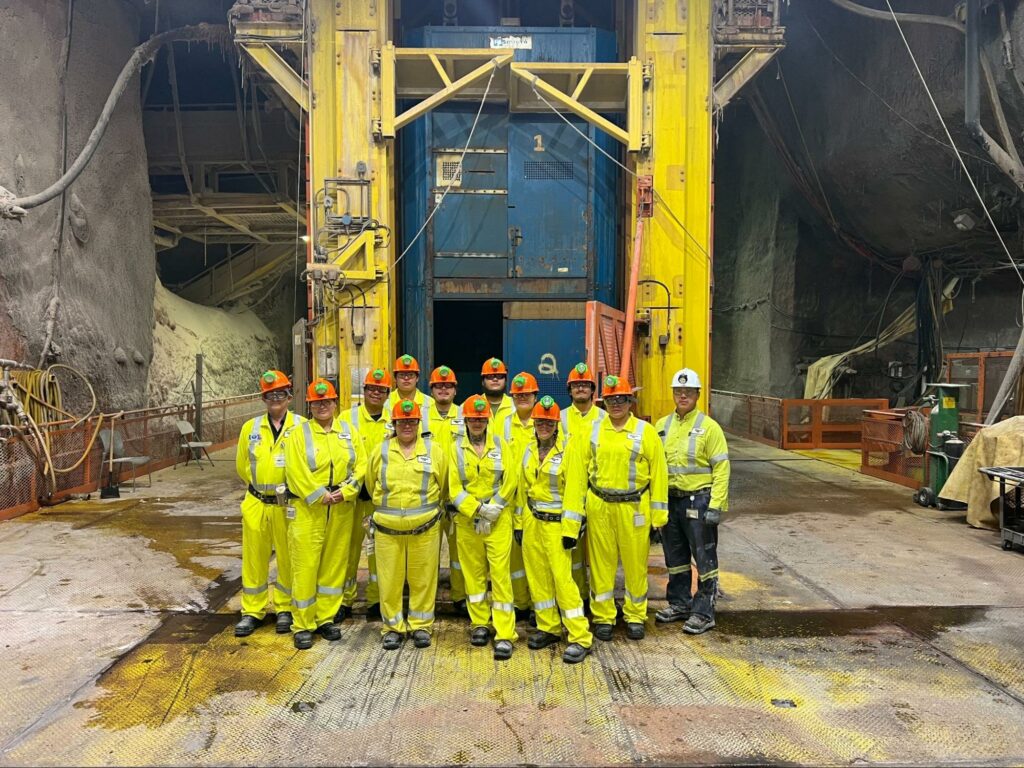Technological advancement is at the heart of the minerals industry, especially in Saskatchewan. We are rich in mining resources, so it’s only natural that we would become a hub for the innovation that drives the industry forward globally. Here in Saskatchewan, we’re seeing and supporting emerging technologies such as autonomous and tele-remote systems, virtual reality (VR), robotics, digitization, predictive maintenance, machine learning, and more.
Advancing Technology Projects in the Minerals Industry
Let’s take a look at some of the teams and projects paving the way for our constantly evolving minerals industry.
Nutrien is currently piloting their NextGen project across six of their facilities in Saskatchewan. NextGen combines tele-remote systems and automated mining, using cameras, communications systems, and other technologies that allow operators to have an overview of the entire mining system in real time. Projects like this maximize both worker safety and efficiency.
The Mosaic Company’s Esterhazy potash mine, K3, is the first new underground potash mine in Saskatchewan for more than 50 years. It was built to be one of the most technologically advanced operations in the world with its Integrated Operations Center (IOC), allowing operators to view and monitor the flow of ore on its 11km long conveyance system.
Cameco is always looking for ways to use technology to improve safety and efficiency in their processes. Robotics, artificial intelligence, and advanced process control have been at the forefront of their innovative processes, and reskilling their workforce has been a high priority as they embrace the digital transformation. Their program, Advanced Mining and Processing through Efficiency and Digitization-Uranium Project (AMPED-UP), is helping them apply the digital transformation to about 50 of their projects, adopting data analytics, AI, machine learning, predictive maintenance, automation, AI and robotics.
Virtual Reality for Minerals Education
Virtual reality technology has grown beyond recreational use and into many key global industries. It is now changing the face of the minerals industry, especially when it comes to education. There are many courses and projects underway in Saskatchewan that utilize VR to provide a safe and effective learning environment for students, including:
- The new virtual mine lab at Saskatchewan Polytechnic. IMII is proud to help fund this state-of-the-art lab for their Mining Engineering Technology diploma program. The lab will offer students an immersive and safe learning experience with simulations of real mine environments. The technology is quite impressive, simulating everything from surface-level training (getting equipment, tagging in the tag board, getting on the cage, and travelling underground) to underground training. Once ‘underground,’ students can learn specific tasks such as surveying. While students immerse themselves in a secure and authentic learning environment, instructors have the ability to assess their performance within the VR program. This cost-effective, immersive technology will bring students’ education to the next level! IMII is excited to contribute to the digital skills of our upcoming mining professionals.
- Sandvik’s VR truck operator training—TH. Sandvik, an engineering company that’s a key supplier for mining, utilizes this technology to create training programs individually tailored to each operator, teaching efficiency and safety in a completely risk-free environment. TH has the same controls as the real thing, ensuring that anything learned in the virtual environment transfers to the real world seamlessly. In addition to increased safety and efficiency, TH runs remotely, reducing the carbon footprint of commuting for training.
- Morris Interactive is doing something similar with VR in their Indigenous pre-employment program, Digital Transformation in Potash Mining. The training program utilizes their Industry Sponsor, Noble Construction’s potash-specific VR Safety modules in combination with on-site training for students. VR creates a safe environment for students to learn about various safety processes, retake learning modules as required, and build the skills needed to succeed SAFELY in a minerals career. In addition, they utilize a VR platform that allows students to experience various trades, exposing them to a variety of new opportunities within the industry! Morris Interactive also partners with Mosaic to provide on-site practicums where students shadow workers at their mines for two weeks. Fun fact: Noble Construction’s VR modules that Morris Interactive’s course utilizes are filmed at Mosaic’s K3 mine (mentioned above)! A second fun fact: IMII funded the purchase of VR equipment used by the students in this training.
Virtual Reality Applications in the Minerals Industry
Beyond the many applications in education and training, VR has also entered into the strategy side of the minerals industry. The coordination needed to develop a mine is complex. Mines are often remotely located, meaning it’s challenging for surveyors, engineers, designers, and other experts to reach them. This is where technology can come in.
VR can offer a new level of efficiency and efficacy when it comes to planning. With VR, those working on a mining project can see 3D models and simulations of plans. Design reviews can happen remotely, decreasing the carbon footprint and increasing the ease of collaboration. Engineers and designers can get a full picture all at once, and make adjustments to the plans as needed. In addition, identifying potential problems becomes easier than ever with the zoom-in function.
Technology, especially VR, has such potential to make our industry more safe, sustainable, and efficient than ever before.
The IMII is proud to be a key part of this flourishing industry, dedicated to constant improvement and innovation. To learn more about our many wonderful partners and initiatives, head to our site.



